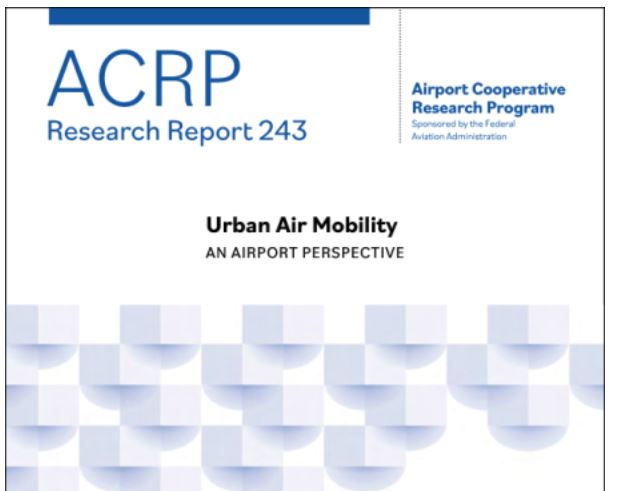
The Airport Cooperative Research Program (ACRP), an industry consortium that develops practical solutions to problems faced by airport operators, has published its report “Urban Air Mobility: An Airport Perspective”.
In its summary the report says it addresses “the motivations for UAM for airports, assesses the market, and describes emerging use cases with a solid business case for airport applications. It provides assessment tools for airport operators to determine readiness for UAM, multimodal integration, and community outreach. It also describes a strategy for engaging with airport stakeholders to better understand their perspectives, views of policy, and planning considerations regarding the operational integration of UAM.”
In addition the report says the research “yields some overarching observations that it says airport practitioners should be aware of to enhance their understanding and preparedness for AAM.”
These include:
- “The market assessment shows substantial growth across UAM for Passenger Air Mobility, Air Cargo, and Emergency Services use cases. Growth in the Air Cargo market is expected to be more substantial in the near term (2025) but grow at a more moderate pace as it assumes a greater share of the parcel delivery market.
- “Ineffective community engagement can stall or prevent projects from proceeding. With just 25 percent of consumers admitting their comfort with unmanned aircraft vehicle technology, the widespread adoption of UAM will depend heavily on building public acceptance.
- “Many questions remain to be answered regarding physical and cyber security for the use cases presented in this report. These questions require further research to understand best practices that provide adequate security without impeding innovation.
- “Core challenges identified in the research include the rapidly evolving regulatory, technology, and aircraft prototype landscape that introduces uncertainty in planning for specific implementation pathways.
- “To operate efficiently, organisational silos between surface and air transportation entities will need to be addressed to support shared mobility between air and surface transportation.”
For more information and to download the report
https://www.trb.org/Publications/Blurbs/182927.aspx
(Image: ACRP)

